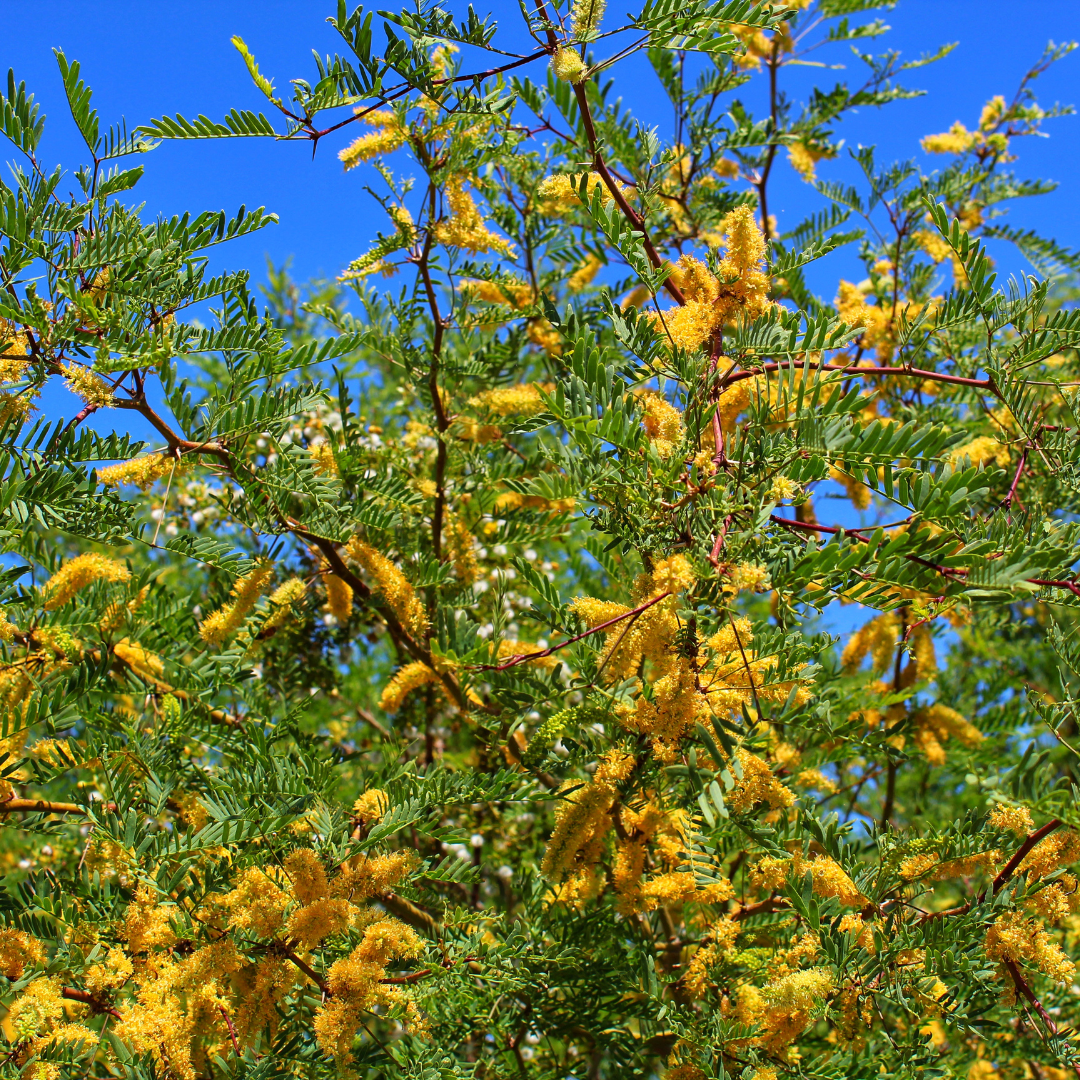My Store
Texas Honey Mesquite
Texas Honey Mesquite
Couldn't load pickup availability
Plant Type: tree
Plant Height: 20-30 feet
Spread: 20-30 feet
Flower Color: pale-yellow to greenish-yellow
Sun Exposure: Full Sun
Texas Honey Mesquite – A Resilient, Drought-Tolerant Shade Tree for Arizona
Texas Honey Mesquite (Prosopis glandulosa) is a hardy, medium-sized tree ideally suited for Arizona’s arid and semi-arid climates. Native to the southwestern United States, this resilient tree is beloved for its rugged beauty, unique foliage, and practical uses in sustainable landscaping.
Key Features of Texas Honey Mesquite
-
Light Shade and Fine Texture: Texas Honey Mesquite’s open canopy provides gentle, dappled shade, perfect for desert gardens. Its compound leaves, with numerous small leaflets, create a delicate texture that adds dimension to landscapes. During late spring and early summer, the tree blooms with clusters of small, pale yellow flowers that attract pollinators and add a soft, natural charm.
-
Drought Resilience and Deep Roots: With a deep taproot system, Texas Honey Mesquite is incredibly drought-tolerant, accessing moisture from far below the soil surface. This makes it ideal for low-water landscapes, xeriscapes, and areas with restricted water access.
-
Multi-Purpose Wood and Edible Seed Pods: The tree’s dense, hardwood is highly valued for furniture-making, flooring, and barbecue grilling, where it imparts a distinctive smoky flavor. The long seed pods are edible and have been traditionally used in local dishes and as livestock feed, making the tree a valuable addition to sustainable landscapes.
Ideal Landscaping Uses
Texas Honey Mesquite’s ability to thrive in hot, dry conditions makes it a reliable shade tree for naturalistic and desert-themed landscapes. It works well as a specimen tree, in soil reclamation projects, or as a part of a xeriscape design where its drought resistance can shine. The tree’s fine-textured leaves and striking bark offer visual interest year-round, particularly in water-wise gardens.
Why Choose Texas Honey Mesquite for Your Arizona Garden?
Perfect for arid landscapes, Texas Honey Mesquite brings beauty, adaptability, and sustainability to gardens and public spaces. Its delicate foliage, subtle blooms, and practical uses make it a standout choice for Arizona gardeners seeking low-maintenance, eco-friendly plant options.
Three Timbers Installation Guide (Feel Free to Follow): Texas Honey Mesquite
Planting Guide:
- Location: Full sun (at least 6 hours of direct sunlight for optimal growth and flowering)
- Soil: Well-drained, sandy or loamy soil (slightly acidic to neutral soil preferred)
- Spacing: Space trees 12-15 feet apart to allow for optimal growth and to accommodate their canopy spread
- Planting Depth: Plant at the same depth as the root ball, ensuring the top of the root ball is level with the surrounding soil surface
- Support: Texas Honey Mesquite is a self-supporting tree and does not require staking. It grows into a small, rounded tree with a spreading canopy and produces sweet-smelling yellow flowers
Watering Guide:
Watering After Planting:
- Initial Watering: Water thoroughly immediately after planting to saturate the root ball and surrounding soil
- Frequency: Water every 5-6 days for the first 2-3 weeks to help establish the root system
- Watering Amount: Provide 3-4 inches of water per session for deep watering
When is the Plant Established?
- Timeframe: Texas Honey Mesquite is considered established after 6-8 months when the roots have spread into the surrounding soil
Watering Once Established:
- Summer: Water every 10-14 days during the hotter months. If temperatures exceed 100°F, increase watering to every 7-10 days. Provide 4-5 inches of water per session.
- Winter: Water every 4-6 weeks during the cooler months, depending on rainfall.
Drip Irrigation Setup:
- Placement of Emitters: Place the drip emitters 18-24 inches away from the base of the tree for deep watering of the root zone
- Flow Rate: Use emitters with a flow rate of 2-4 gallons per hour
- Number of Emitters: 2-3 emitters per tree for even watering distribution
- Adjusting Frequency: In summer, increase watering frequency to every 7-10 days. In winter, reduce to every 4-6 weeks
Share












